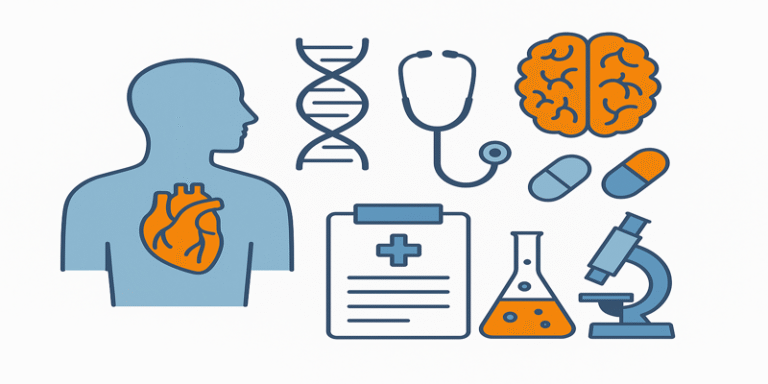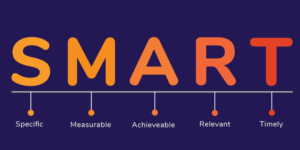The medical and health sciences encompass a diverse range of disciplines aimed at understanding the human body, preventing disease, and improving overall health outcomes. This field applies biological and chemical principles to explore human anatomy, physiology, pathology, and treatment methods. Breakthrough innovations such as vaccines, MRI machines, and robot-assisted surgery are products of the scientific advancements in this domain (Tortora & Derrickson, 2017).
In today’s interconnected world, where global health challenges range from infectious diseases to chronic lifestyle conditions, the medical and health sciences play a vital role in safeguarding population health. This article outlines key study modules within the field, highlighting their significance and real-world applications.
1.0 Anatomy
Anatomy is the study of the structure of the human body, from the macroscopic organisation of organs and systems to the microscopic architecture of cells and tissues. It is typically divided into:
- Gross anatomy – visible structures studied through dissection.
- Microscopic anatomy (histology) – cellular and tissue-level examination.
Understanding anatomical structures is foundational for all healthcare professionals, allowing them to identify diseases, perform surgeries, and interpret diagnostic images. For instance, surgeons rely on precise anatomical knowledge to navigate complex vascular networks during operations (Standring, 2020).
2.0 Cardiology
Cardiology focuses on the heart and circulatory system, covering the diagnosis, treatment, and prevention of cardiovascular diseases such as:
- Coronary artery disease
- Heart failure
- Arrhythmias
Cardiologists use tools like electrocardiograms (ECG), echocardiography, and cardiac catheterisation to monitor and manage heart health. Given that cardiovascular disease remains a leading cause of mortality worldwide, cardiology is a critical area of both clinical practice and research (Libby et al., 2018).
3.0 Genetics
Genetics explores heredity, DNA structure, and the molecular mechanisms that control how traits and diseases are passed through generations. Key areas include:
- Mendelian genetics (classical inheritance patterns)
- Molecular genetics (gene structure and function)
- Genomic medicine (using genetic information for diagnosis and treatment)
Applications range from identifying genetic disorders such as cystic fibrosis, to developing personalised medicine approaches where treatment is tailored to a patient’s genetic profile (Strachan & Read, 2018).
4.0 Immunology
Immunology examines the immune system and how it defends the body against pathogens. It includes both:
- Innate immunity – the body’s immediate, non-specific defence mechanisms.
- Adaptive immunity – the specialised response developed after exposure to pathogens or vaccines.
Immunologists play a vital role in vaccine development, allergy treatment, and managing autoimmune conditions. The rapid development of COVID-19 vaccines demonstrated the power of applied immunological knowledge in public health (Male, 2020).
5.0 Nutrition
Nutrition science investigates the relationship between diet, health, and disease prevention. It covers:
- Macronutrients (carbohydrates, proteins, fats)
- Micronutrients (vitamins, minerals)
- Dietary requirements across life stages
Public health nutrition initiatives target conditions such as obesity, diabetes, and malnutrition, aiming to optimise dietary patterns for both individuals and populations (Whitney & Rolfes, 2018).
6.0 Psychiatry
Psychiatry is the branch of medicine concerned with the diagnosis, treatment, and prevention of mental illnesses, including:
- Depression
- Anxiety disorders
- Schizophrenia
- Bipolar disorder
Psychiatrists use a combination of psychotherapy, medication, and lifestyle interventions to support mental health. Increasing recognition of mental well-being as integral to overall health has expanded psychiatry’s role in healthcare systems (Sadock et al., 2022).
7.0 Pharmacology
Pharmacology studies how drugs interact with biological systems, covering drug design, mechanisms of action, metabolism, and side effects. Subfields include:
- Pharmacokinetics – how drugs move through the body.
- Pharmacodynamics – how drugs exert their effects.
Advances in pharmacology have led to life-saving medicines, from antibiotics to cancer immunotherapies (Rang et al., 2021).
8.0 Pathology
Pathology investigates the causes and effects of disease, often through the analysis of body tissues, organs, and fluids. There are several specialisations:
- Histopathology – microscopic examination of tissue samples.
- Forensic pathology – determining cause of death.
- Clinical pathology – laboratory testing of bodily fluids.
Pathologists are essential in disease diagnosis, cancer staging, and guiding treatment decisions (Kumar et al., 2021).
9.0 Epidemiology
Epidemiology is the study of the distribution and determinants of diseases in populations. Epidemiologists design studies to identify risk factors, track outbreaks, and inform public health policies.
This discipline was instrumental during the COVID-19 pandemic, enabling data-driven decisions on interventions such as lockdowns and vaccination campaigns (Rothman et al., 2021).
10.0 Public Health
Public health focuses on disease prevention, health promotion, and prolonging life through organised community efforts. It includes:
- Health education
- Policy development
- Environmental health
Public health strategies tackle challenges like smoking cessation, vaccination coverage, and sanitation improvement, aiming for better health equity across populations.
Interdisciplinary Connections
While these modules can be studied independently, modern medical and health sciences emphasise interdisciplinary collaboration. For example:
- Cardiology relies on pharmacology for drug therapy and imaging technology from medical physics.
- Genetics and immunology intersect in cancer immunotherapy.
- Nutrition and public health work together to address dietary risk factors in chronic disease.
Such integration ensures that patient care is holistic, addressing both physical and psychological needs.
Future Directions in Medical and Health Sciences
Advancements in technology and science are reshaping the field:
- Artificial intelligence in diagnostics enables earlier and more accurate detection of diseases.
- Telemedicine expands healthcare access to remote populations.
- Genomic sequencing allows for targeted treatments in oncology and rare diseases.
- Regenerative medicine using stem cells offers hope for repairing damaged tissues.
However, these advancements also bring challenges related to ethics, data privacy, and healthcare equity, requiring careful policy frameworks.
The medical and health sciences are at the forefront of humanity’s effort to understand, treat, and prevent disease. From studying the intricate anatomy of the human body to harnessing genetic information for personalised care, each module contributes uniquely to the health and well-being of individuals and communities.
As healthcare continues to evolve in response to global health crises, demographic changes, and technological breakthroughs, the need for well-trained professionals across all these disciplines has never been greater. This integration of knowledge, skills, and innovation ensures that the medical sciences remain a cornerstone of modern society.
References
Kumar, V., Abbas, A. K., Aster, J. C. & Perkins, J. A. (2021). Robbins Basic Pathology (10th ed.). Elsevier.
Libby, P., Bonow, R. O., Mann, D. L., Zipes, D. P. & Tomaselli, G. F. (2018). Braunwald’s Heart Disease: A Textbook of Cardiovascular Medicine (11th ed.). Elsevier.
Male, D. (2020). Immunology (9th ed.). Elsevier.
Rang, H. P., Ritter, J. M., Flower, R. J. & Henderson, G. (2021). Rang & Dale’s Pharmacology (9th ed.). Elsevier.
Rothman, K. J., Lash, T. L. & Greenland, S. (2021). Modern Epidemiology (4th ed.). Wolters Kluwer.
Sadock, B. J., Sadock, V. A. & Ruiz, P. (2022). Kaplan and Sadock’s Synopsis of Psychiatry (12th ed.). Wolters Kluwer.
Standring, S. (2020). Gray’s Anatomy: The Anatomical Basis of Clinical Practice (42nd ed.). Elsevier.
Strachan, T. & Read, A. P. (2018). Human Molecular Genetics (5th ed.). Garland Science.
Tortora, G. J. & Derrickson, B. H. (2017). Principles of Anatomy and Physiology (15th ed.). Wiley.
Whitney, E. N. & Rolfes, S. R. (2018). Understanding Nutrition (15th ed.). Cengage Learning.









